Algarve Exploration
Albufeira,
Algarve,
Alvor,
Culatra,
Lagos,
Portimao,
Sailing,
Tavira
The Algarve was always the goal for 2017. If we liked it here, we were planning to stay for winter. If not, there was still time to continue onwards, either into Gibraltar, Mediterranean Spain (Almerimar was recommended) or to the Canary Islands. Now that we had arrived here, it was time to explore and see how we'd like it!
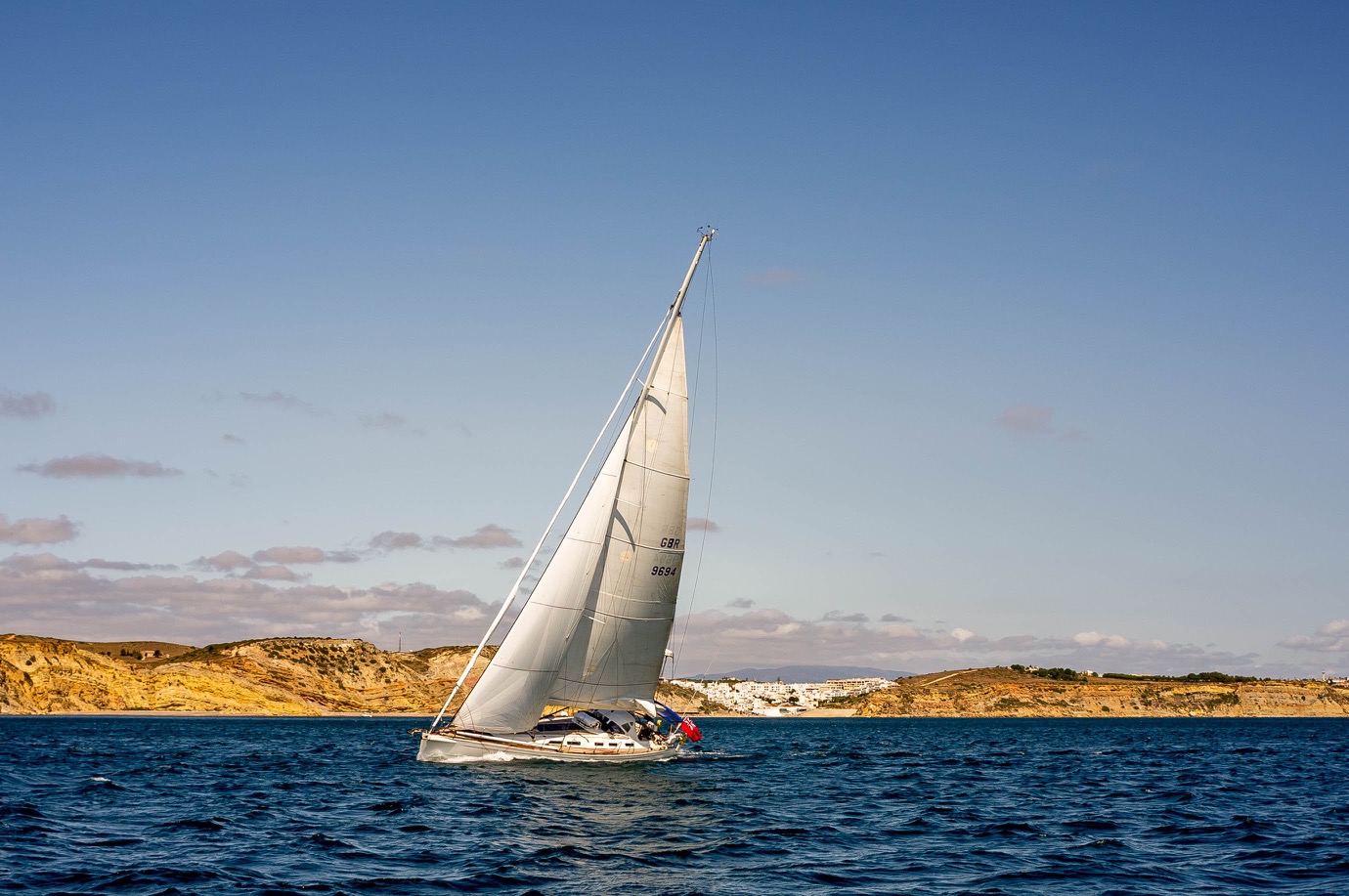
Our first stop after Sagres was Lagos. The Nortada, a northerly trade wind had been blowing for days. Coming off the land, it was causing a perfectly flat sea with 25 knots of wind on the beam - cracking sailing conditions and Songbird was barreling along at 7.5 knots under full sails. Elvyra felt a little antsy about this as we were perhaps slightly over-canvassed, but I was having a blast, manually helming for once, mainsheet in hand, easing out with wind gusts and finally doing what a sailboat is meant to do, after far too much motor use.
With no swell at all, we had the luxury of being able to anchor pretty much anywhere off the coast, so we thought about Burgau as a potential lunch stop, just because it had such a strangely German sounding name. We sailed up to it, but the sight of hotel bunkers, beach bars and cream cheese coloured tourists put us off and we just kept sailing. Little did we know that this was how most of the western Algarve looked like.
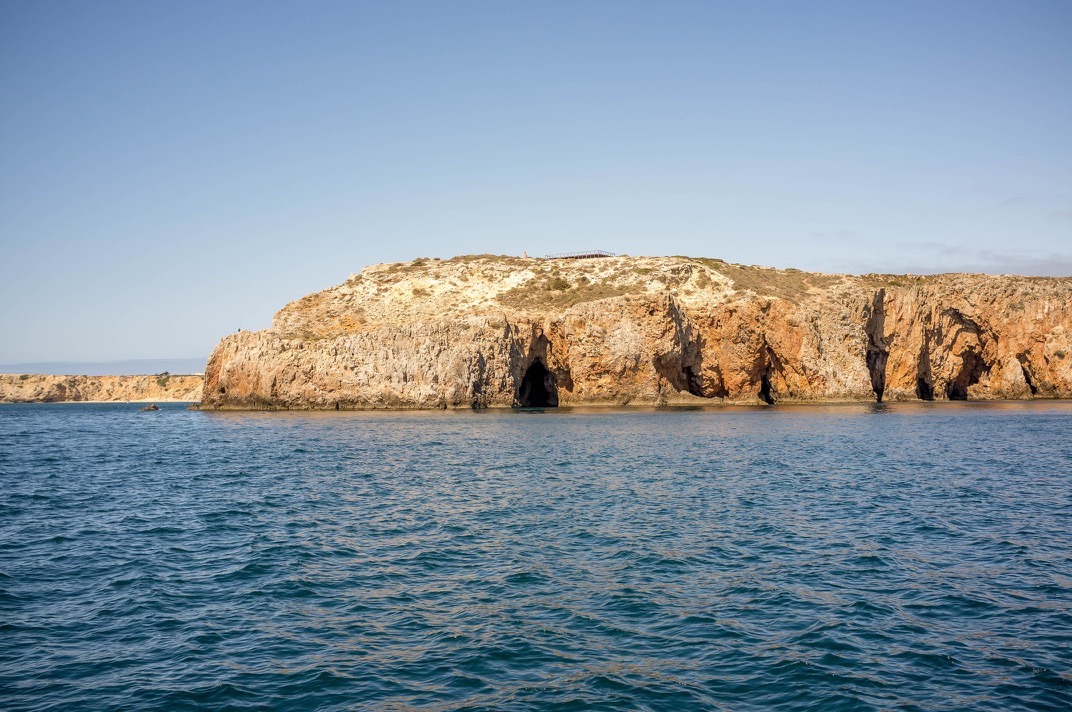
The approach to Lagos offered some impressive cliffs with outstanding rocks and grottoes and we soon dropped anchor just off the beach outside the harbour entrance. Elvyra prepared a lovely pasta dinner, but just when it was ready a RIB carrying two officers of the Policia Maritima arrived and boarded us. They were very friendly and just wanted to see the usual ships papers, passports and questions about our previous and next stops. The guy even apologized for interrupting dinner, which we soon resumed.
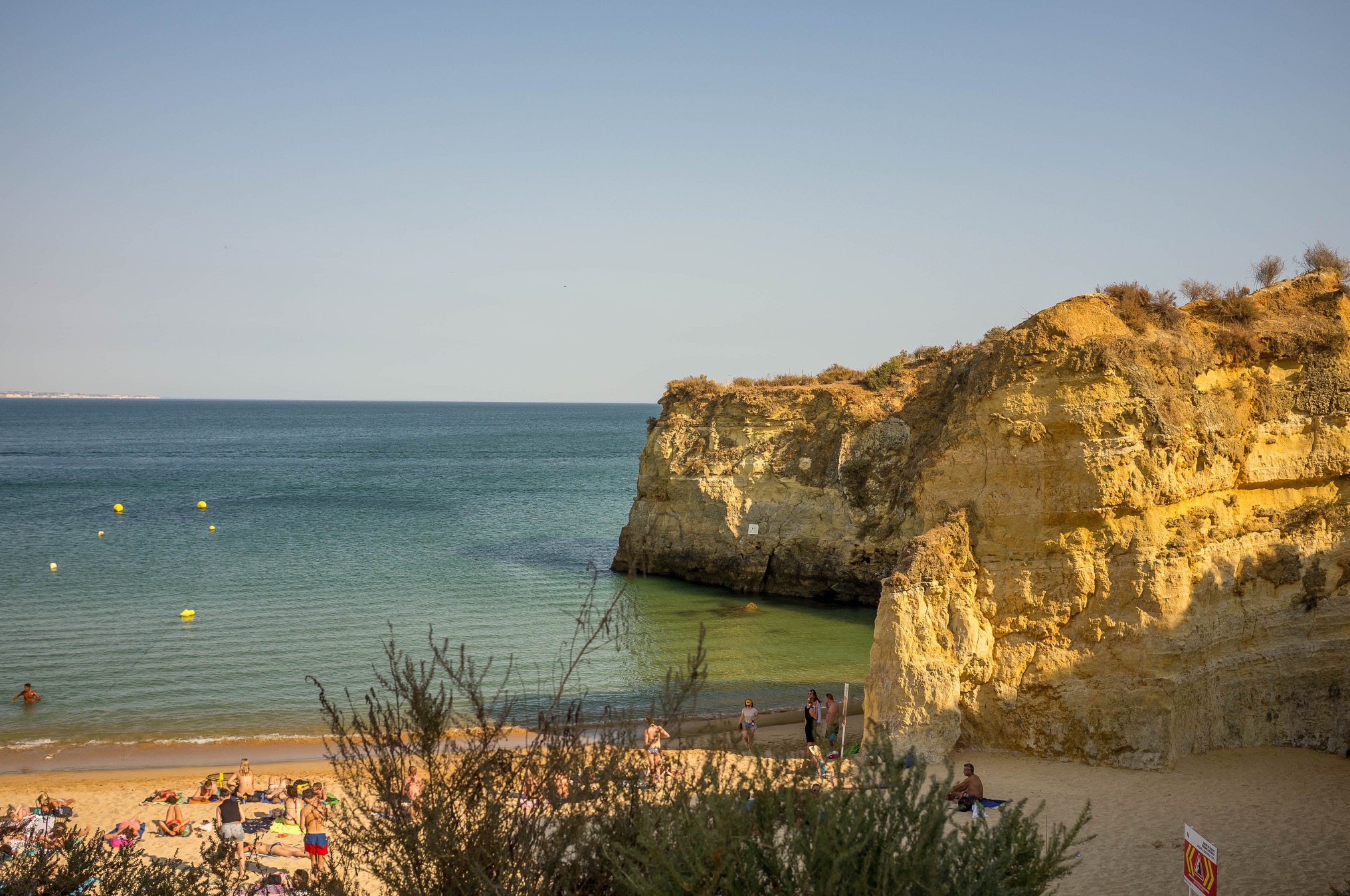
With it being late September, we wanted to scout for a good winter location or move on while there was still time, should we be unable to find one to our liking. So we were planning to visit every place suitable for this, marinas and anchorages both. This meant we hauled up anchor around noon the next day and went into Lagos breakwater, through an artificial concrete channel past endless lines of stalls selling cork handbags to sunburnt tourists and onto the marina waiting pontoon just before the pedestrian drawbridge. The office staff was friendly and helpful and gave us a berth for one night.
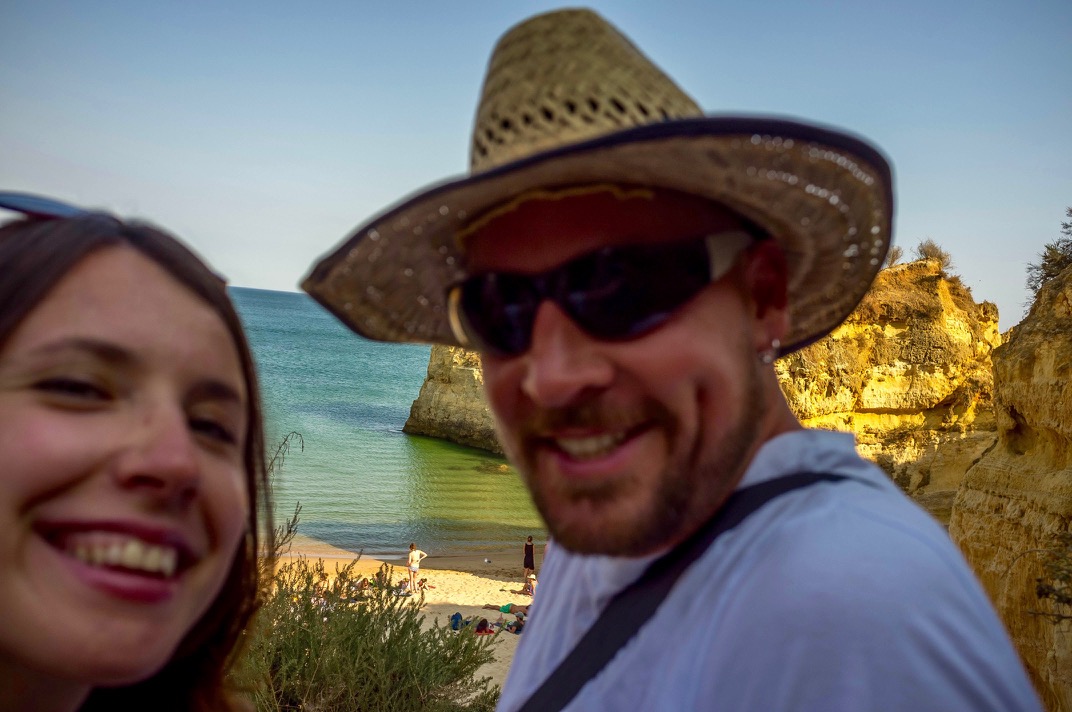
This being our first town in the Algarve proper, we were in for a bit of a culture shock that left us with a bad taste. Too many tourists, mainly english ones (or at least they were the loudest), sitting in sports bars all around the marina, getting drunk at all hours of the day. Full english breakfasts (ugh) advertised everywhere and restaurant menus in three languages, none of which was Portuguese. We wandered around quite a bit to see the old town and found a nice looking garden restaurant with some okay grilled food. The marina had a bit of a retirement home flair - one guy was even limping along the pontoons on crutches and the marina plan helpfully pointed to the on-site "medial services".
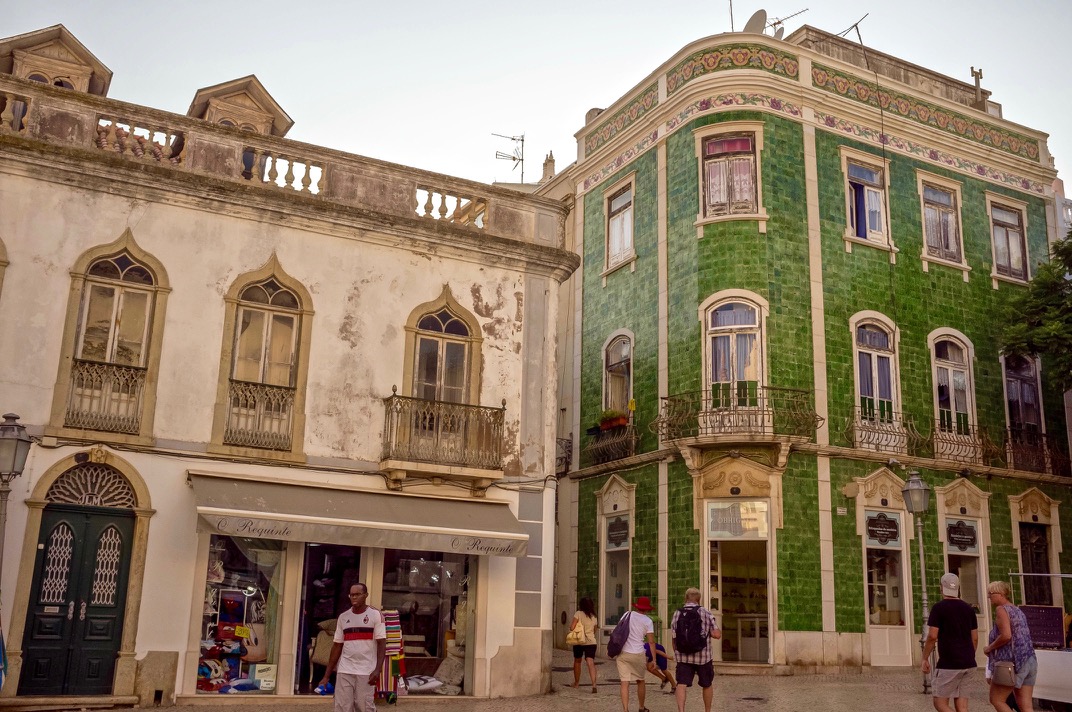
We used the conveniently located Lidl and Pingo Doce supermarkets to provision and cast off the next day towards Portimao, with a quick snoop around Alvor, which we found pretty shallow inside. We went on and anchored in Portimao, finding a convenient gap in the middle of the many boats already anchored there. During dinner we watched some anchoring drama, as a brand new looking 45ft Bavaria arrived with two people aboard. They couldn't figure out how to work their windlass and after some trying and shrugging at the bow fed out the chain by hand in 30cm increments, which took a while. After growing tired of that, they tried to set the anchor with far too little scope, and of course it did not bite, so they started motoring around the anchorage at speed, with the anchor and chain dragging - something that could've resulted in interesting things happening if the anchor would suddenly bite into something down there. A Norwegian skipper must've watched the show as well as he hopped into his dinghy, went over to the anchor amateurs and offered them some help. He soon had it sorted and hopefully managed to pass on some knowledge. He has our gratitude, as they were pretty close to us - but we didn't have our dinghy assembled at the time.

The next day we checked out the marina. Portimao was more of a "real" town than Lagos, although the marina was a bit out of town and there was only one tiny convenience store nearby. Everywhere else meant a long walk into town, through some empty areas. We got the folding bikes out and cycled into town, which turned into quite a long ride. Elvyra behaved much like my iPhone above and demanded to cool down, so I left her sitting outside and guarding the bicycles while I explored the huge "Jumbo" store and came back with drinks, snacks and a pack of outrageously priced English tea from the import shelf. We cycled back to the marina, but rush hour traffic was pretty busy and it wasn't that fun to cycle in that.
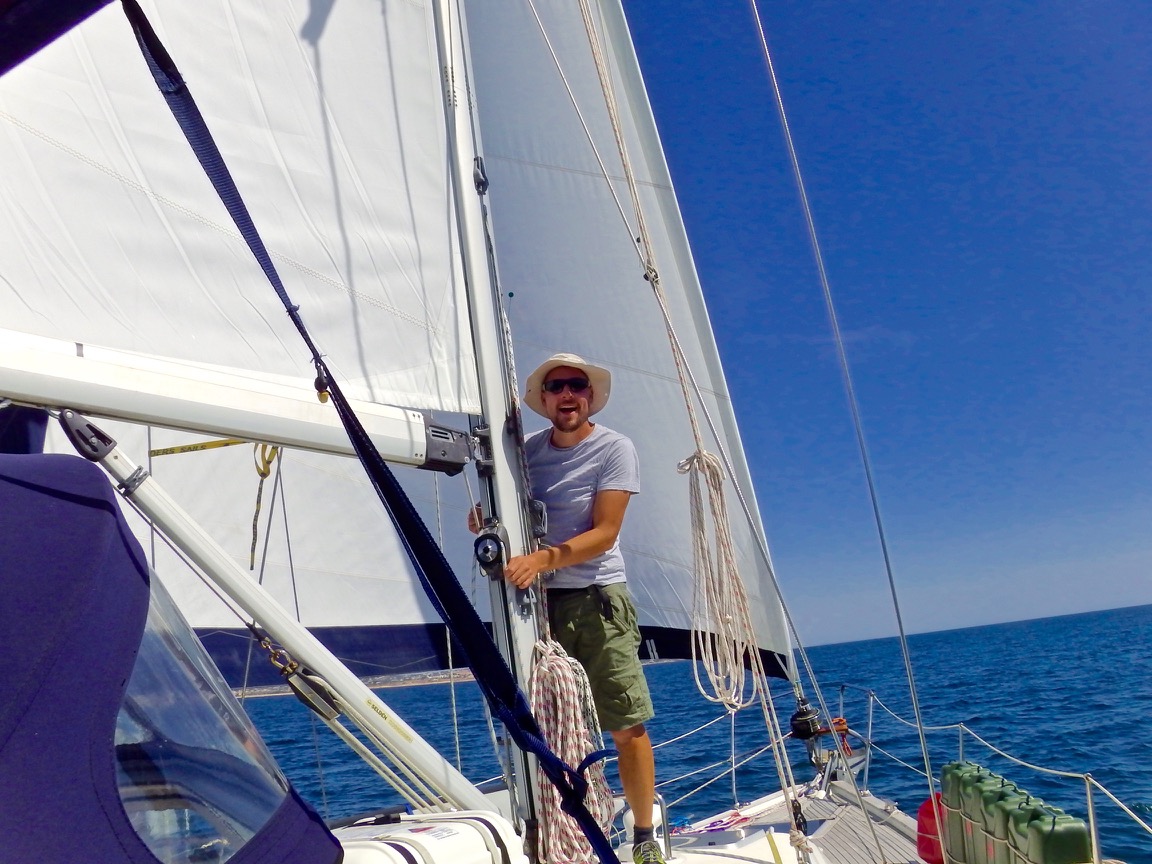
Another day, another town! The next stop was going to be Albufeira. The marina was built fairly recently and was not complete on my 2011 electronic chart, so I had a look at Navionics, which showed a potential anchorage just outside the eastern breakwater. We cruised there, past another impressive bunch of rock formations and grottoes, well visited by tourist trippers. There were some large orange temporary marker buoys near the anchorage, much like the ones used for sailboats racing a short course. I thought nice, we might get to watch some of that at anchor. How wrong I was - just as I was about to drop the anchor, we found out what the markers were for. A large "Jetboat" came blasting along at speed, doing a sliding turn with lots of noise, wash and water spray and screams from the passengers strapped into its seats. The thing is basically an overgrown jetski, bigger and more annoying. We abandoned the idea of anchoring in its path and since we still had ample time, we turned around, explored the rock formations as close as we dared to get and then went into the marina.

The marina access channel was cut through a cliff, forming a canyon on both sides, opening into a dug out basin with the marina berths inside. This provides excellent wind shelter in a storm, although was a bit hot in September. The town was on top of a cliff, but a gently sloping access path meant it wasn't too strenuous getting there, at least if you're used to living on the bottom of a cliff, which anyone from Brighton Marina will be well familiar with. There are buses to get around town, although to provision we simply walked to Lidl and then took an Übler car back for about €4.
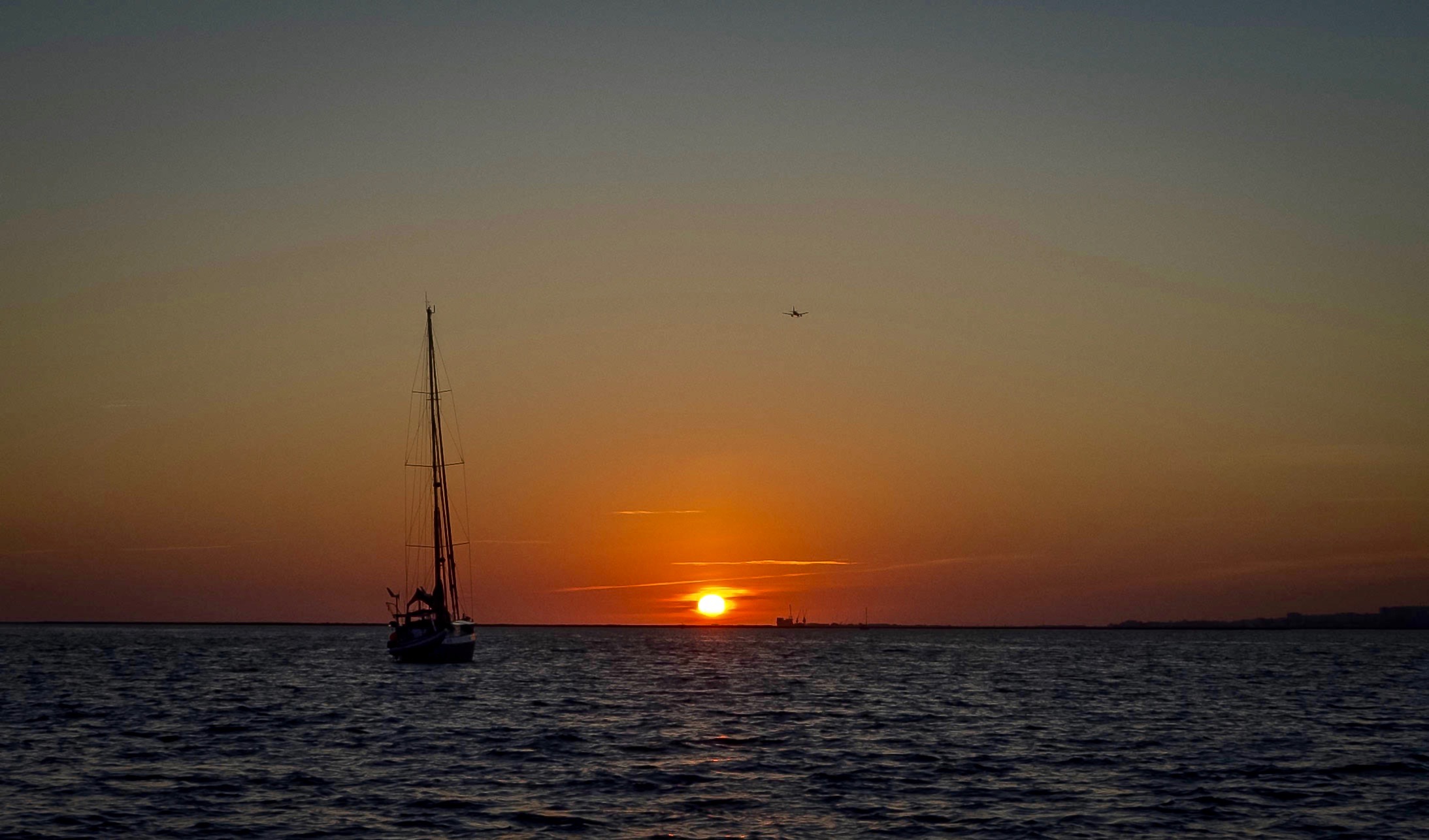
The next stop would've been Vilamoura, but since we heard nothing but bad things about the place (including very silly marina pricing), we decided to skip it for now and visit on our return trip westwards, when the berthing fee would be cut to a third in the low season. Instead, we headed into Ria Formosa, the huge lagoon seawards of the towns of Faro and Olhão. The entrance was a fun ride on a rising tide, which flows quite strongly here and pushed Songbird to nearly 10 knots over ground. Once inside, there's a channel leading to a very large anchorage off Culatra island, which had about 50 boats at anchor and still plenty of space. We found a good spot at the edge and dug Mr. Rocna deep into the muddy bottom.
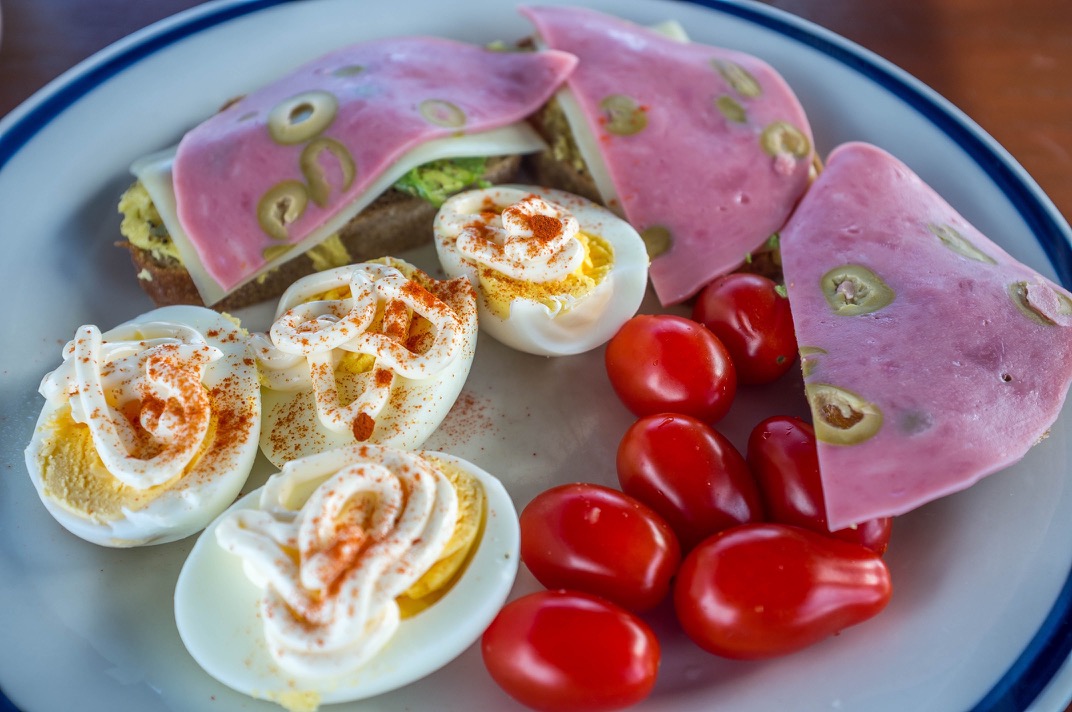
We spent a couple nights here, as it was a nice anchorage completely protected from swell and calm apart from the odd water taxi shooting through the middle of the anchorage, the water was warm and nice for swimming. One day we took the dinghy to Culatra island and explored a bit. It's a tiny settlement on what is little more than a large sand dune. There are no roads, just a few concrete slab paths to walk on, and no cars. A few restaurants and one small shop, which based on the sign on the door only opens if you call the owner on their mobile phone. We saw what looked like a bakery, but there were no signs outside, so we just asked them if they were selling these things. They were and we acquired some delicious baked sweets. Nobody spoke English and we had to resort to our few words of Portuguese, gesticulating and typing prices into a phone or calculator, which was great! We felt like we had finally found the real Portugal again and escaped the tourist resorts for a while.
Next we would head to the Rio Guadiana, the river that demarcates the border between Portugal and Spain.